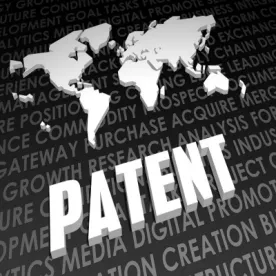The US Court of Appeals for the Federal Circuit determined that a Patent Trial and Appeal Board (PTAB) finding regarding motivation to combine based only on conclusory expert testimony was not supported by substantial evidence, and thus reversed the PTAB’s determination that the patents-in-suit were unpatentable as obvious over the prior art. TQ Delta, LLC v. Cisco Systems, Inc., Case Nos. 18-1766, -1767 (Fed. Cir. Nov. 22, 2019) (Stoll, J).
Cisco Systems filed two inter partes review (IPR) petitions challenging the patentability of two TQ Delta patents related to improving the signal to power ratio of electronic communications systems. The IPR petitions alleged that the challenged patents were unpatentable based on the combination of two prior art references, either alone or in combination with other prior art that was not at issue on appeal.
The PTAB invalidated all of the challenged claims as obvious based on the combination of the two prior art references, adopting Cisco’s positions regarding motivation to combine the two references—positions that largely relied on the testimony of Cisco’s expert. TQ Delta appealed to the Federal Circuit, arguing that the PTAB’s finding regarding motivation to combine was not supported by substantial evidence.
The Federal Circuit reiterated its oft-stated position that “conclusory expert testimony is inadequate to support an obviousness determination on substantial evidence review.” The Court distinguished expert testimony concerning one of ordinary skill in the art’s technical ability to combine particular prior art from motivation to actually make the alleged combination. The Court also explained that its case law stood for the proposition that expert testimony concerning mere “knowledge of a problem and motivation to solve it [is] entirely different from motivation to combine particular references.”
Turning to the facts of the appeal, the Federal Circuit explained that while both prior art references were focused on the same general field of technology as TQ Delta’s patents, they were not directed to solving the same problem. Indeed, the alleged prior art included neither an “express discussion of, nor any connection to” the patented solution. Nor did Cisco’s expert’s testimony provide the “necessary link.” Instead, the expert offered unsupported testimony that a skilled artisan would have been motivated to apply the teachings of the asserted prior art to solve the problem addressed by the patents-in-suit, and that the alleged combination “would have been a relatively simple and obvious solution” to that problem. The lack of supporting evidence rendered the expert’s testimony conclusory. The Federal Circuit explained that “[u]ntethered to any supporting evidence,” the expert’s “ipse dixit” testimony “‘fail[ed] to provide any meaningful explanation for why one of ordinary skill in the art would be motivated to combine [the asserted references] at the time of the invention’” and “in the way the claimed invention does.” Active Video (emphasis in original). Therefore, the expert’s testimony was “inadequate to support the Board’s fact finding regarding motivation to combine,” and thus the PTAB’s determination was unsupported by substantial evidence. Accordingly, the Court reversed the PTAB’s obviousness determination.
Practice Note: Expert testimony concerning motivation to combine must be supported by record evidence. Conclusory testimony that one of ordinary skill in the art would be motivated to undertake a particular prior art combination based merely on recognition of the problem addressed by the patent-in-suit is unlikely to suffice.



 />i
/>i

